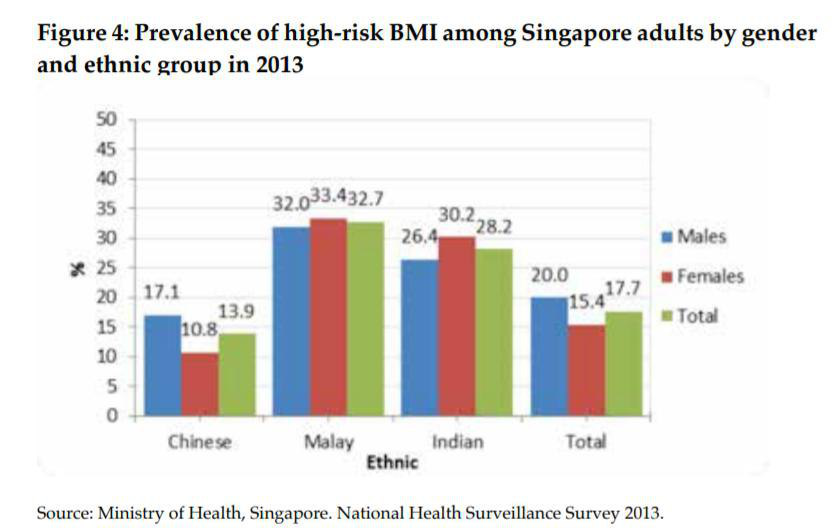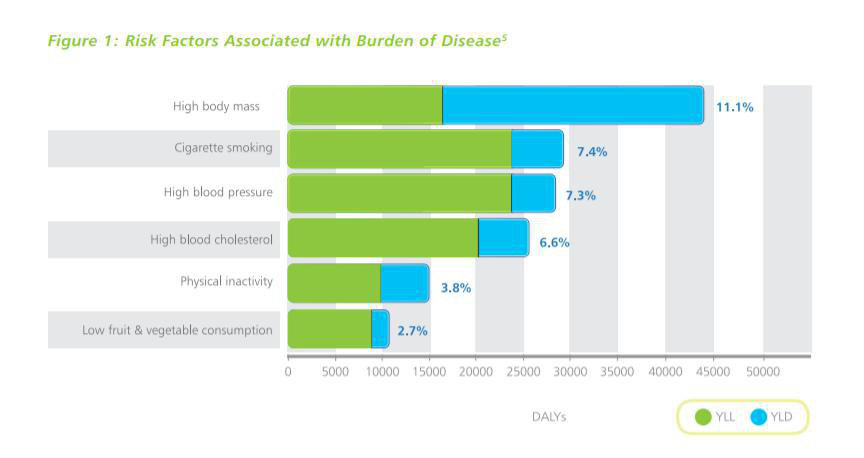Difference between revisions of "1718t1is428T4"
| Line 13: | Line 13: | ||
| '''Explanation''' | | '''Explanation''' | ||
|- | |- | ||
| − | | [[File:bmi. | + | | [[File:bmi.png|center|upright=3.0]] |
<div align="center">Source : https://www.hpb.gov.sg/docs/default-source/pdf/obesity-cpg_main_for-online-30-aug.pdf?sfvrsn=2288eb72_0</div> | <div align="center">Source : https://www.hpb.gov.sg/docs/default-source/pdf/obesity-cpg_main_for-online-30-aug.pdf?sfvrsn=2288eb72_0</div> | ||
| This figure allow us to have an understanding of the residents in Singapore that have a higher potential of high-risk BMI, by breaking it down into three different ethnic group, comprising Chinese, Malay and Indian. Within each group, a further breakdown by gender was carried out, providing us with a clearer view of their diet preferences. | | This figure allow us to have an understanding of the residents in Singapore that have a higher potential of high-risk BMI, by breaking it down into three different ethnic group, comprising Chinese, Malay and Indian. Within each group, a further breakdown by gender was carried out, providing us with a clearer view of their diet preferences. | ||
|- | |- | ||
| − | | [[File:sgObese. | + | | [[File:sgObese.png|center|upright=3.0]] |
<div align="center">Source: https://foodindustry.asia/the-state-of-obesity-in-singapore</div> | <div align="center">Source: https://foodindustry.asia/the-state-of-obesity-in-singapore</div> | ||
| This figure has shown the obesity rate among children and how these habits that was inculcated since young may lead to a lifestyle in their later stage of life. The graph has also included the recommended and actual calories intake by adult on a daily basis. With the alarming rate of obesity among children and adult, the proportion of obese residents in Singapore will reach 15% by 2024, if no action or measures is taken or enforced. | | This figure has shown the obesity rate among children and how these habits that was inculcated since young may lead to a lifestyle in their later stage of life. The graph has also included the recommended and actual calories intake by adult on a daily basis. With the alarming rate of obesity among children and adult, the proportion of obese residents in Singapore will reach 15% by 2024, if no action or measures is taken or enforced. | ||
|- | |- | ||
| − | | [[File:riskFac. | + | | [[File:riskFac.png|center|upright=3.0]] |
<div align="center">Source: https://www.moh.gov.sg/content/dam/moh_web/Publications/Reports/2014/HLMP/MOH_Healthy%20Living%20Master%20Plan_Inside%20Page_8d.pdf</div> | <div align="center">Source: https://www.moh.gov.sg/content/dam/moh_web/Publications/Reports/2014/HLMP/MOH_Healthy%20Living%20Master%20Plan_Inside%20Page_8d.pdf</div> | ||
| This figure has shown the obesity rate among children and how these habits that was inculcated since young may lead to a lifestyle in their later stage of life. The graph has also included the recommended and actual calories intake by adult on a daily basis. With the alarming rate of obesity among children and adult, the proportion of obese residents in Singapore will reach 15% by 2024, if no action or measures is taken or enforced. | | This figure has shown the obesity rate among children and how these habits that was inculcated since young may lead to a lifestyle in their later stage of life. The graph has also included the recommended and actual calories intake by adult on a daily basis. With the alarming rate of obesity among children and adult, the proportion of obese residents in Singapore will reach 15% by 2024, if no action or measures is taken or enforced. | ||
Revision as of 07:06, 16 October 2017
Contents
Problem and Motivation
The increasing number of food delivery companies, such as FoodPanda, Deliveroo and UberEATS, has provided residents in Singapore with an easy alternative to have their food delivered to their doorstep. The convenience reaped from this service has also gained popularity among the working population and students due to the reduction in time in getting the meal. This is a worrying trend just like the increasing preference for fast food.
As how consuming more fast food reduced the time taken to wait for the food, the benefit of food delivery has adversely promoted laziness in the users, whereby the ease of getting food has eliminated the travelling time and effort for the users. This means that one can spend more time enjoying his/her meal and also get more whenever and wherever they want.
Studies are showing that Singapore will reach a concerning 15% for obesity rate in seven years. Obesity has significant implications such as high blood pressure, type 2 diabetes, heart diseases, strokes, etc. Coming from a generation which focuses on convenience and quickness, we were curious to find out the factors that drive the rate of obesity so that we can propose a solution to combat obesity on a national level.
Background Survey and Related Works
| Survey | Explanation |
| This figure allow us to have an understanding of the residents in Singapore that have a higher potential of high-risk BMI, by breaking it down into three different ethnic group, comprising Chinese, Malay and Indian. Within each group, a further breakdown by gender was carried out, providing us with a clearer view of their diet preferences. | |
| This figure has shown the obesity rate among children and how these habits that was inculcated since young may lead to a lifestyle in their later stage of life. The graph has also included the recommended and actual calories intake by adult on a daily basis. With the alarming rate of obesity among children and adult, the proportion of obese residents in Singapore will reach 15% by 2024, if no action or measures is taken or enforced. | |
| This figure has shown the obesity rate among children and how these habits that was inculcated since young may lead to a lifestyle in their later stage of life. The graph has also included the recommended and actual calories intake by adult on a daily basis. With the alarming rate of obesity among children and adult, the proportion of obese residents in Singapore will reach 15% by 2024, if no action or measures is taken or enforced. |
Technical Challenges
| Least familiarity with D3.js, javascript and jQuery | Attend workshop conducted during recess week
Self-learning through online platform (e.g. codeAcademy) Peer-learning |
| Data Preparation | Decide as a team on what data to keep and eliminate |
| Availability of data sets | Research data through other platforms such as SMU Libraries and companies’ official webpage |


